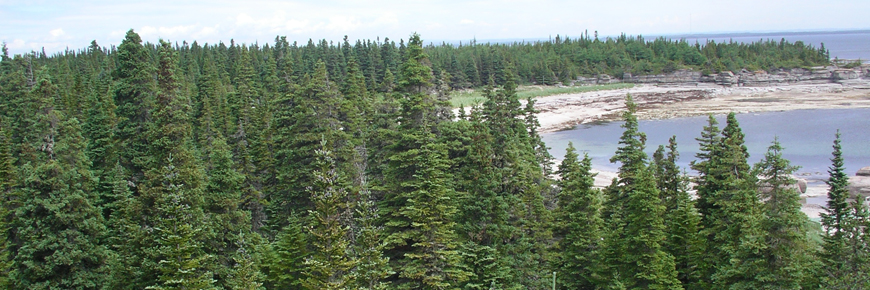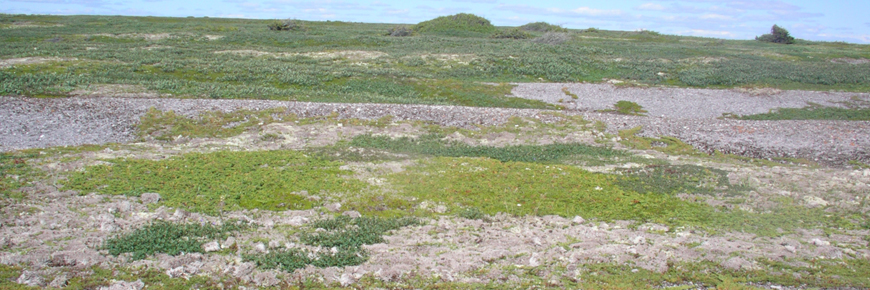
Research and monitoring
Mingan Archipelago National Park Reserve
Ecological integrity of Canada's national parks
Parks Canada's mandate is to preserve and present nationally significant examples of Canada's natural heritage, while fostering the public appreciation towards them. The ecosystems that characterize national parks (e.g., forests, wetlands, coastal environments) are therefore protected to ensure their ecological integrity for present and future generations.
Ecosystems are unaltered when their native components (e.g., water, soil, biodiversity), their functions, and the processes that characterize them (e.g., forest fires, insect outbreaks, predation, and competition between species) are intact.
Learn more about Parks Canada's ecological integrity monitoring program.
Ecological integrity assessments
Each national park periodically measures the health status of three of their ecosystems and evaluate their condition over time. These ecosystems are called indicators because they reflect the overall health status of the park. This health status is determined by evaluating the condition of a sequence of key features and processes called measures.
To detect changes, each of these measures is compared with reference values called ecological baseline. In assessing the status of measures and indicators over time, it is possible to detect trends. When a significant change in the health status of a measure is detected, Parks Canada sets in motion actions to understand the causes of the observed changes. Once the causes have been identified, conservation and restoration actions are implemented.
| Status of measures and indicators | |
|---|---|
| Good | |
| Fair | |
| Bad | |
| Trend of measures and indicators | |
|---|---|
| Improvement | |
| Stabilization | |
| Deterioration | |
Learn more about restoring the ecological integrity of Canada's national parks.
Ecological integrity monitoring program for Mingan Archipelago National Park Reserve
In the Mingan Archipelago National Park Reserve, the following three indicators have been selected for the ecological integrity monitoring program.
Boreal forest

The boreal forest covers 65% of the total area of the Park Reserve and is composed mainly of conifers and softwood. The dynamics of this forest are linked to wind action and insect outbreaks. When the high winds rise, fallen trees called windfall create openings in the forest canopy and increase the amount of light and debris on the ground, thereby promoting the growth of young vegetation. Depending on their magnitude and frequency, these disturbances are capable of altering the composition and structure of the boreal forest and can significantly increase the biodiversity.
The boreal forest in the Park Reserve is home to a large number of forest birds, mammals and some reptiles and amphibians. It is also in this ecosystem that some seabirds, including Double-crested Cormorants and Common Eiders, nest.
Monitoring measures
- Windfall tree dynamics
- Forest composition
- Growing season
- Impact of Double-crested Cormorants
- Breeding population of Common Eiders
Learn more about the boreal forest of Mingan Archipelago National Park Reserve.
Barrens

The barrens cover about 10% of the total area of the Park Reserve and is similar to both arctic and alpine tundras. This ecosystem is characterized by an almost bare ground (stony barrens and lichen tundras) or by a low and stunted vegetation (herbaceous and shrub-dominated barrens) and features an open and dry environment exposed to the wind. The four types of barrens extend along each other in the Mingan Archipelago to create a complex and unique mosaic.
It is in this ecosystem that we find half of the rare plants species of the Park Reserve. Some seabirds, including the Herring Gulls, the Sea Gulls and Common Eiders, nest here during the summer.
Monitoring measures
- Rare plant populations
- Flowering phenology
- Breeding population of Common Eiders
- Breeding population of Herring and Sea Gulls
- Barrens mosaic
Learn more about the barrens of the Mingan Archipelago National Park Reserve.
Coastal environment

The coastal environment covers about 7% of the total area of the Mingan Archipelago National Park Reserve and includes the islands' upper shoreline and cliffs. This transitional ecosystem, located between the sea and the land, is exposed to tides and winds. During winter storms, the tides are amplified and can accelerate erosion of the coastline in the absence of protective ice cover. This highly dynamic habitat is also subject to the potential effect of several stressors, including trampling, oil spills and climate changes.
This ecosystem is where we find a great diversity of rare plants and where several colonies of seabirds, such as the Common and Arctic Terns, find shelter to nest.
Monitoring measures
- Sediment dynamics
- Oil spills
- Seabirds colonies
- Rare plant populations
- Breeding population of Common and Arctic Terns
Learn more about the coastal environment of the Mingan Archipelago National Park Reserve.
For each of these three indicators of the Park Reserve, five measures were chosen. Each of these measures represents either a native component or a process characteristic of the associated ecosystem.
Learn more about ecosystem monitoring.
Learn more about the Mingan Archipelago National Park Reserve’s condition.
- Date modified :